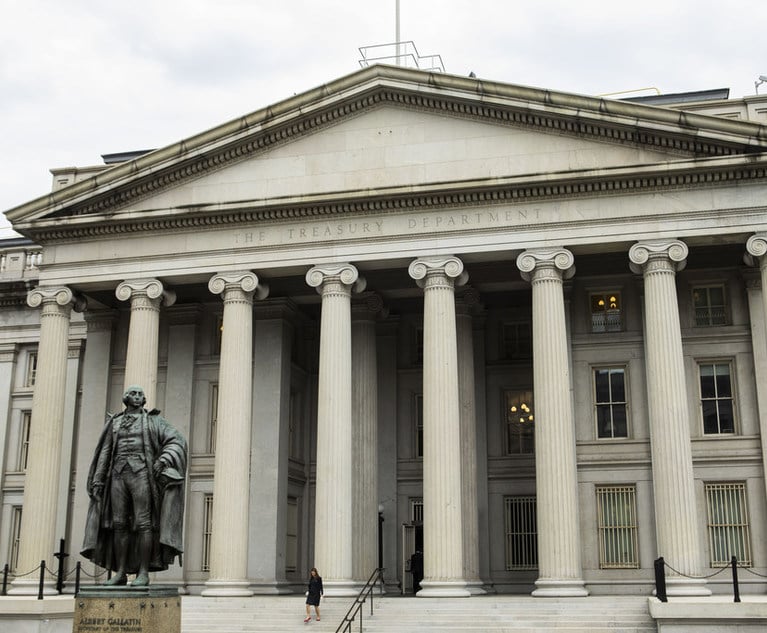IP: “Reexamination” in the new patent enforcement landscape
The new regulations offer strategic options for patent owners and challengers.
September 27, 2011 at 08:14 AM
4 minute read
The original version of this story was published on Law.com
The America Invents Act, signed by President Obama on Sept.16, significantly altered the landscape of patent enforcement for businesses and inventors. In an effort to streamline the patent dispute process, the bill provides incentives designed to make it more desirable to keep challenges within the U.S. Patent and Trademark Office. These incentives limit, but don't remove, what have been perceived as abuses that needlessly exacerbated the time and expense of litigation.
So, in essence, this means that patent owners and challengers have more strategic options for patent reviews throughout the life of a patent.
Under this new regime, the Patent Office will no longer conduct inter partes “reexamination,” which is currently used in many of the most hotly contested patent cases. Instead, two new post-grant challenges, called “inter partes review” and “post-grant review,” will be available. These new proceedings are similar, but post-grant review expands the type of defects in a patent that can be challenged, but only if raised within nine months of issuance. These new proceedings promise to resolve questions of validity of a patent at least a year faster than current inter partes “reexamination”—and, more importantly, faster than a typical patent case moves through the courts.
As a result, whenever challenging patents for reasons that are likely to be better understood by skilled patent judges within the Patent Office than a judge or jury in district court, these proceedings will provide an attractive option. Congress is even providing additional incentives to use them. For example, these proceedings can be settled privately, making it more possible to arrive at win-win business solutions to patent disputes.
Businesses willing to monitor competitive patent activity can use settlements, coupled with the new ability to challenge threatening patents, for almost any reason as a new tool for managing risk. The ability to settle makes these proceedings more like “oppositions,” that are frequently used in other countries for retiring—or at least clarifying—risks from patents before an active dispute arises.
This ability to manage risk is enhanced by a change in the threshold requirement for initiating post-grant review in combination with an expanded ability to provide prior art to an examiner, even before a competitive patent is issued. The changed threshold removes the requirement for a post-grant challenge to raise a “new” question and, instead, allows prior art that an examiner considered but perhaps misunderstood to be a basis for a post-grant challenge. There is now more upside, and less downside, to providing prior art to an examiner that may block issuance of an overly broad competitive patent.
Of course, wasteful litigation tactics in hotly contested patent cases are not the sole province of patent owners. Congress also has targeted the tactic of defending a charge of infringement by alleging “inequitable conduct” by the patent holder. Now, “supplemental examination” will be available in which the Patent Office will consider possible defects—if proactively disclosed by the patent owner. If the defect does not affect the validity of the patent, the Patent Office will issue a certificate to that effect. If there is a question about the validity of a patent, the Patent Office will order reexamination to resolve the question.
In either event, once disclosed, the defect cannot be used as a basis for rendering a patent unenforceable for “inequitable conduct.” However, these new proceedings are not without caveats, including the possibility of estoppel arising from a post-grant challenge. Expedited timetable and rules of practice for contested matters in the Patent Office can pose risks for lawyers who cavalierly participate in these proceedings without fully understanding their specialized nature. Nonetheless, patent holders and challengers would do well to consider how to use these new procedures to their advantage as they come into effect.
This content has been archived. It is available through our partners, LexisNexis® and Bloomberg Law.
To view this content, please continue to their sites.
Not a Lexis Subscriber?
Subscribe Now
Not a Bloomberg Law Subscriber?
Subscribe Now
NOT FOR REPRINT
© 2025 ALM Global, LLC, All Rights Reserved. Request academic re-use from www.copyright.com. All other uses, submit a request to [email protected]. For more information visit Asset & Logo Licensing.
You Might Like
View All
Internal Whistleblowing Surged Globally in 2024, So Why Were US Numbers Flat?
6 minute read
FTC Finalizes Child Online Privacy Rule Updates, But Ferguson Eyes Further Changes

Supreme Court Reinstates Corporate Disclosure Law Pending Challenge
Trending Stories
- 1LexisNexis Announces Public Availability of Personalized AI Assistant Protégé
- 2Some Thoughts on What It Takes to Connect With Millennial Jurors
- 3Artificial Wisdom or Automated Folly? Practical Considerations for Arbitration Practitioners to Address the AI Conundrum
- 4The New Global M&A Kings All Have Something in Common
- 5Big Law Aims to Make DEI Less Divisive in Trump's Second Term
Who Got The Work
J. Brugh Lower of Gibbons has entered an appearance for industrial equipment supplier Devco Corporation in a pending trademark infringement lawsuit. The suit, accusing the defendant of selling knock-off Graco products, was filed Dec. 18 in New Jersey District Court by Rivkin Radler on behalf of Graco Inc. and Graco Minnesota. The case, assigned to U.S. District Judge Zahid N. Quraishi, is 3:24-cv-11294, Graco Inc. et al v. Devco Corporation.
Who Got The Work
Rebecca Maller-Stein and Kent A. Yalowitz of Arnold & Porter Kaye Scholer have entered their appearances for Hanaco Venture Capital and its executives, Lior Prosor and David Frankel, in a pending securities lawsuit. The action, filed on Dec. 24 in New York Southern District Court by Zell, Aron & Co. on behalf of Goldeneye Advisors, accuses the defendants of negligently and fraudulently managing the plaintiff's $1 million investment. The case, assigned to U.S. District Judge Vernon S. Broderick, is 1:24-cv-09918, Goldeneye Advisors, LLC v. Hanaco Venture Capital, Ltd. et al.
Who Got The Work
Attorneys from A&O Shearman has stepped in as defense counsel for Toronto-Dominion Bank and other defendants in a pending securities class action. The suit, filed Dec. 11 in New York Southern District Court by Bleichmar Fonti & Auld, accuses the defendants of concealing the bank's 'pervasive' deficiencies in regards to its compliance with the Bank Secrecy Act and the quality of its anti-money laundering controls. The case, assigned to U.S. District Judge Arun Subramanian, is 1:24-cv-09445, Gonzalez v. The Toronto-Dominion Bank et al.
Who Got The Work
Crown Castle International, a Pennsylvania company providing shared communications infrastructure, has turned to Luke D. Wolf of Gordon Rees Scully Mansukhani to fend off a pending breach-of-contract lawsuit. The court action, filed Nov. 25 in Michigan Eastern District Court by Hooper Hathaway PC on behalf of The Town Residences LLC, accuses Crown Castle of failing to transfer approximately $30,000 in utility payments from T-Mobile in breach of a roof-top lease and assignment agreement. The case, assigned to U.S. District Judge Susan K. Declercq, is 2:24-cv-13131, The Town Residences LLC v. T-Mobile US, Inc. et al.
Who Got The Work
Wilfred P. Coronato and Daniel M. Schwartz of McCarter & English have stepped in as defense counsel to Electrolux Home Products Inc. in a pending product liability lawsuit. The court action, filed Nov. 26 in New York Eastern District Court by Poulos Lopiccolo PC and Nagel Rice LLP on behalf of David Stern, alleges that the defendant's refrigerators’ drawers and shelving repeatedly break and fall apart within months after purchase. The case, assigned to U.S. District Judge Joan M. Azrack, is 2:24-cv-08204, Stern v. Electrolux Home Products, Inc.
Featured Firms
Law Offices of Gary Martin Hays & Associates, P.C.
(470) 294-1674
Law Offices of Mark E. Salomone
(857) 444-6468
Smith & Hassler
(713) 739-1250







